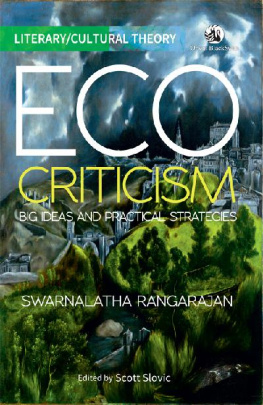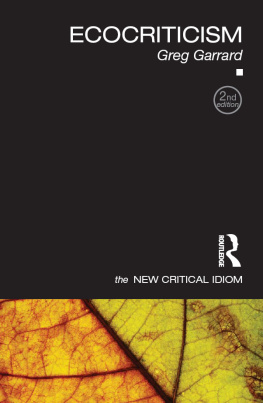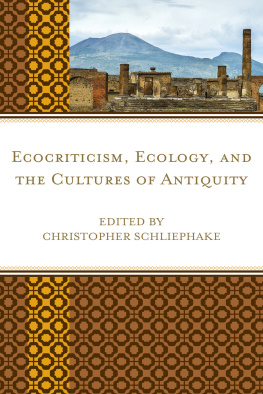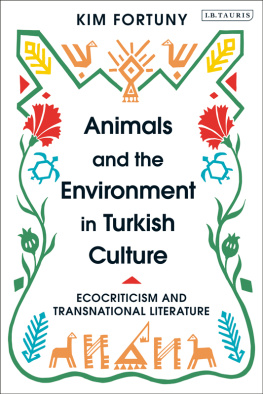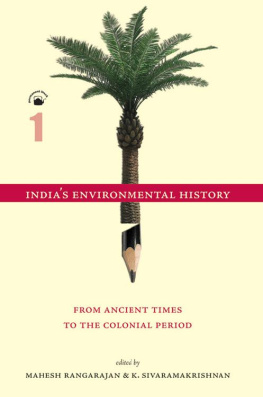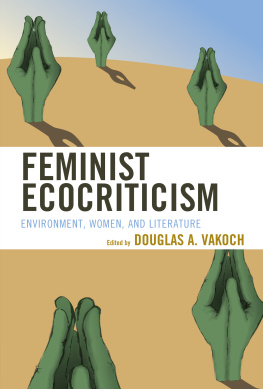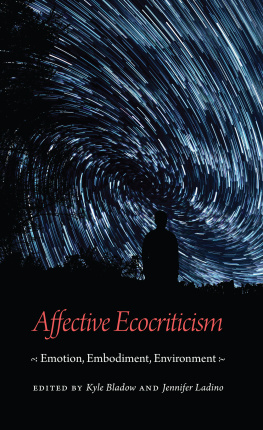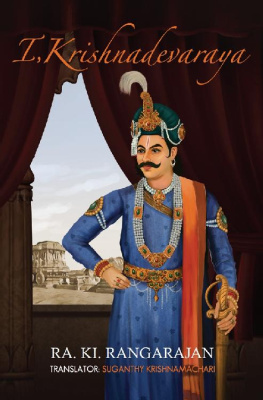Literary/Cultural Theory provides concise and lucid introductions to a range of key concepts and theorists in contemporary literary and cultural theory. Original and contemporary in presentation, and eschewing jargon, each book in the series presents students of humanities and social sciences exhaustive overviews of theories and theorists, while also introducing them to the mechanics of reading literary/cultural texts using critical tools. Each book also carries glossaries of key terms and ideas, and pointers for further reading and research. Written by scholar-teachers who have taught critical theory for years, and vetted by some of the foremost experts in the field, the series Literary/Cultural Theory is indispensable to students and teachers.
Series Editors
Allen Hibbard
Middle Tennessee State University
Andrew Slade
University of Dayton
Herman Rapaport
Wake Forest University
Imre Szeman
University of Alberta
Krishna Sen
University of Calcutta
Scott Slovic
University of Idaho
Sumit Chakrabarti
Presidency University, Kolkata
Ecocriticism: Big Ideas and Practical Strategies
ORIENT BLACKSWAN PRIVATE LIMITED
Registered Office
3-6-752 Himayatnagar, Hyderabad 500 029, Telangana, India
e-mail:
Other Offices
Bengaluru, Bhopal, Chennai, Guwahati, Hyderabad, Jaipur, Kolkata, Lucknow, Mumbai, New Delhi, Noida, Patna, Visakhapatnam
Orient Blackswan Private Limited 2018
First published 2018
eISBN 9789352876426
e-edition: First Published 2019
e-Pub Conversion:
All rights reserved. No part of this publication may be reproduced, distributed, or transmitted in any form or by any means, including photocopying, recording, or other electronic or mechanical methods, without the prior written permission of the publisher, except in the case of brief quotations embodied in critical reviews and certain other noncommercial uses permitted by copyright law. For permission requests write to the publisher.
Editors Preface
The field of ecocriticism, as I understand it, seeks to explain through textual analysis who we are (as individuals and as a species) and how and why we think about and interact with other beings (human and non-human) and with places as we do. To me, it all boils down to two overarching paradigms: animality and place.
Swarnalatha Rangarajans encyclopedic overview of the diverse and evolving discipline of ecocriticism may seem bewildering to readers coming to the field for the first time: How can global climate change and gender equality and animal rights and posthumanism all be related to each other, and why should we bother studying what seem to be scientific and economic and philosophical questions by reading texts of various kinds, ranging from literature to films?
It all boils down to animality and place, two of the defining dimensions of our human existence and the idea that media of cultural expression (poetry, painting, music, food, architecture, and so forth) represent our deepest thinking about these vital aspects of our lives. Sometimes (in fact, often) we express ourselves in forms that are somewhat indirect and suggestive, in media that require careful explanation by trained interpreters. That is where ecocriticism, which is simply a type of textual and cultural studies, comes in. Ecocriticism is a branch of scholarship that considers the meaning of our lives within the broad context of the more-than-human world by examining the texts we produce.
Some scholarly modes in the humanities, such as New Criticism, deconstruction and stylistics, focus on text in and of itself, on patterns of language. Other modes, including New Historicism and psychoanalytic approaches, consider texts (literary and otherwise) within a human context. In the late 1970s, following the first Earth Day in 1970 and at a time when people throughout the world were becoming more and more conscious of the impacts of human population growth and industrial practices upon the health and habitability of the planet, literary scholars began consciously inventing various strategies for doing their work that would place this work in a broader context, a context that recognises the implications of our lives (including our works of art) in a more-than-human context. In other words, as American ecocritic David Mazel put it in his book American Literary Environmentalism (2000), scholars began studying texts as if the earth mattered.
Many of us were doing this work as university students in the 1980s. As Professor Rangarajan explains, a professor named William Rueckert from the State University of New York at Oneonta first coined the term ecocriticism in an article he published in 1978. His article focused on illuminating the ecological properties of poetry and of language more generally, especially the way in which energy can be stored in particular texts and then passed along to readers through meaning and inspiration. Rueckerts term (ecocriticism) lay dormant for more than a decade before Cheryll [Burgess] Glotfelty, then a Ph.D. student at Cornell University, came across his article and sent a letter to fellow graduate students and various writers and professors in the United States, asking if we agreed that literary critics ought to be paying attention to the state of the planet as we did our work, not only reading texts in a narrow, somewhat insular human context. This letter went out in a mass mailing in 1989. Several years later, Professor Glotfelty (who was by then teaching at the University of Nevada, Reno) and another scholar named Harold Fromm published a collection of articles titled The Ecocriticism Reader: Landmarks in Literary Ecology (1996), which laid the formal foundation for what we now know as the field of ecocriticism. By 2017, some two decades after the publication of Glotfelty and Fromms monumental collection, we have witnessed the rapid evolution of this field, including at least four recognisable phases (the four waves of ecocriticism) and the blending of ecocriticism per se (environmentally inflected textual studies) with sister disciplines in the environmental humanities, including environmental history, environmental philosophy and environmental religious studies, to name a few. This blended, multidimensional approach to humanistic thinking about the situation, the meaning of our species in the world, is now called the environmental humanities.
The risk of presenting the kind of genealogy of the field I have offered here and the overview Professor Rangarajan provides in this book is that we focus on the notable, even foundational, contributions from North America (the book itself also makes significant gestures to other regions of the world), but there are also independent processes by which environmental textual criticism emerged in other regions and countries. Scholars such as Shuyuan Lu in China, Nirmal Selvamony in India and Jacek Kolbuszewski in Poland were devising their own ecocritical practices in the 1980s, completely independent of the North American and Western European genesis of green literary and cultural studies. Professor Kolbuszewski, for instance, published (in Polish) such works as Tatra Mountains in Polish Literature, 18051959 (1982), Landscape and Culture (1985), Nature Conservation and Literature (1990) and The Landscapes of Popular Culture (1994). Other scholars in far-flung regions such as southern Africa, Australia and New Zealand, South America, and Scandinavia have also demonstrated unique traditional and contemporary approaches to ecocriticism and the integrated environmental humanities. Professor Rangarajans book gestures toward some of these vernacular (or local) varieties of ecocriticism, but understandably focuses on the well-known currents in the field, which tend to have emerged in North America, Western Europe and East Asia, perhaps because these highly industrialised places have also caused so much ecological havoc and are now scrambling to make sense of the mess they (or we) have made.



